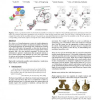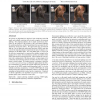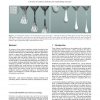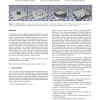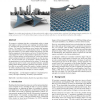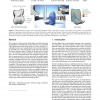83
Voted
SIGGRAPH
2010
ACM
15 years 5 months ago
2010
ACM
How things work visualizations use a variety of visual techniques to depict the operation of complex mechanical assemblies. We present an automated approach for generating such vi...
105
click to vote
SIGGRAPH
2010
ACM
15 years 5 months ago
2010
ACM
We present an algorithm for interactive hair rendering with both single and multiple scattering effects under complex environment lighting. The outgoing radiance due to single sca...
121
Voted
SIGGRAPH
2010
ACM
15 years 5 months ago
2010
ACM
We present an efficient technique to render single scattering in large scenes with reflective and refractive objects and homogeneous participating media. Efficiency is obtained...
74
Voted
SIGGRAPH
2010
ACM
15 years 5 months ago
2010
ACM
SIGGRAPH
2010
ACM
15 years 5 months ago
2010
ACM
We propose a mesh-based surface tracking method for fluid animation that both preserves fine surface details and robustly adjusts the topology of the surface in the presence of ...
72
Voted
SIGGRAPH
2010
ACM
15 years 5 months ago
2010
ACM
We propose a finite element simulation method that addresses the full range of material behavior, from purely elastic to highly plastic, for physical domains that are substantial...
118
Voted
SIGGRAPH
2010
ACM
15 years 5 months ago
2010
ACM
We present an approach to simulate flows driven by surface tension based on triangle meshes. Our method consists of two simulation layers: the first layer is an Eulerian method ...
125
Voted
SIGGRAPH
2010
ACM
15 years 5 months ago
2010
ACM
We introduce an Eulerian liquid simulation framework based on the Voronoi diagram of a potentially unorganized collection of pressure samples. Constructing the simulation mesh in ...
100
click to vote
SIGGRAPH
2010
ACM
15 years 5 months ago
2010
ACM
We propose a technique that takes a triangulated surface as input and outputs a surface with the same topology but altered geometry such that each polygon falls into a set of disc...
95
Voted
SIGGRAPH
2010
ACM
15 years 5 months ago
2010
ACM
The emergence of large-scale freeform shapes in architecture poses big challenges to the fabrication of such structures. A key problem is the approximation of the design surface b...
